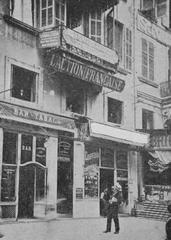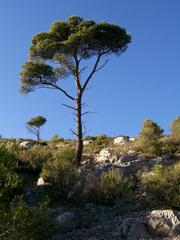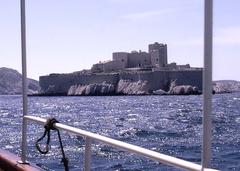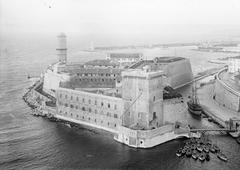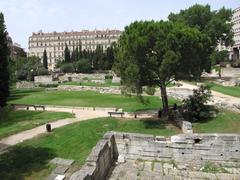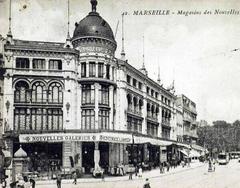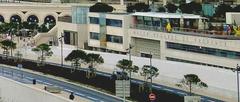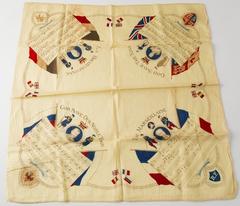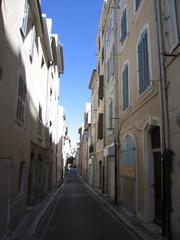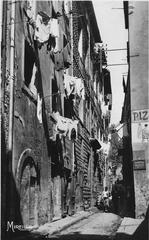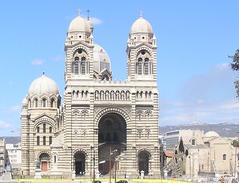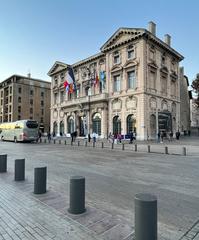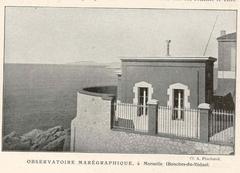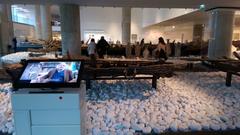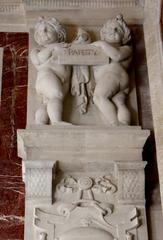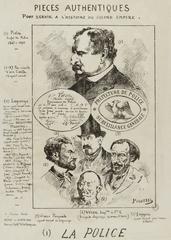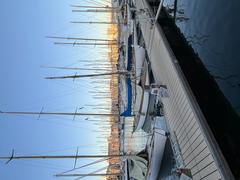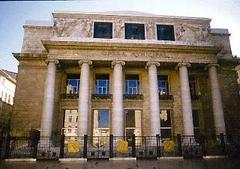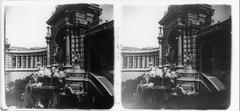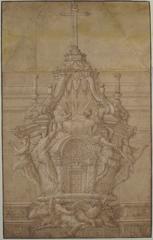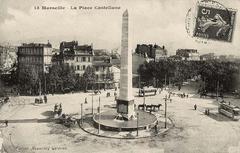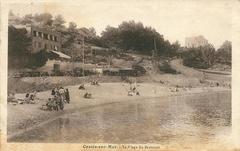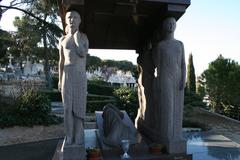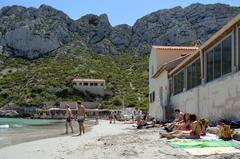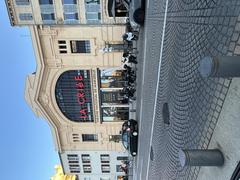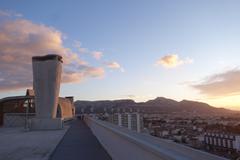Castellane Marseille, France: Visiting Hours, Tickets, and Historical Sites Guide
Date: 04/07/2025
Introduction: Castellane’s Place in Marseille’s History and Culture
Situated in the energetic heart of Marseille, Castellane is more than just a name—it’s a district that bridges the city’s storied past with its dynamic present. Castellane encompasses two interconnected locales: La Castellane, a post-war residential neighborhood emblematic of France’s social housing legacy and multicultural vibrancy (Wikipedia), and Place Castellane, a bustling urban square renowned for its architectural landmarks, lively markets, and pivotal role in Marseille’s daily life (Marseille Tourism). This guide offers a comprehensive overview for visitors—covering history, opening hours, ticketing (where relevant), accessibility, transportation, and cultural highlights—so you can experience the authentic spirit of Castellane, whether you’re an architecture enthusiast, history buff, or curious traveler (Audiala).
Table of Contents
- Introduction
- La Castellane: History & Urban Evolution
- Place Castellane: The Urban Square
- Summary and Key Recommendations
- References
La Castellane: Visiting Hours, Tickets, and Cultural Insights
History and Urban Development
La Castellane emerged between 1969 and 1971 as part of Marseille’s response to a post-war housing shortage during the “Trente Glorieuses.” Built on the “Foresta” lands at the base of the Chaîne de la Nerthe, the district was designed to accommodate French repatriates from Algeria, rural migrants, and baby boomers in need of modern housing (Wikipedia). It quickly became illustrative of modernist urban planning, aiming to replace Marseille’s shantytowns with higher-density living.
Architectural Features
La Castellane epitomizes the “grand ensemble”—a large-scale, high-density housing complex with 1,249 apartments distributed across ten mid-rise buildings and a striking 15-story tower (Tour K). The site’s brutalist concrete architecture stands out, and its compact design affords panoramic views over Marseille.
Social and Demographic Landscape
Originally housing predominantly French-Algerian repatriates and North African immigrants, La Castellane is now a multicultural microcosm, home to communities from Sub-Saharan Africa and the Caribbean. As of 2018, approximately 3,810 residents lived in nearly 1,200 apartments, with the wider urban priority zone encompassing over 9,100 people. Despite its vibrancy, the neighborhood faces challenges: a poverty rate of 56.4%, a high proportion of social housing (77%), and median incomes below the city average.
Cultural Significance and Notable Residents
La Castellane’s identity is deeply tied to its community. Most famously, it’s the childhood home of football legend Zinédine Zidane, whose legacy continues to inspire local youth. Football, street art, and multicultural festivals highlight the area’s dynamic cultural life, reflecting the Mediterranean and African influences woven into Marseille’s fabric.
Visiting La Castellane: Practical Guide
Visiting Hours and Access
La Castellane is a residential neighborhood open to the public at all times. There are no entrance fees or tickets required.
Getting There
- Public Transport: Two bus lines connect La Castellane to the Gèze metro station. Plans for the tramway line 3 extension will further improve access by 2031.
- By Car: Parking is limited; public transport is highly recommended.
Guided Tours and Tips
There are no official visitor centers or ticketed tours, but local guides sometimes offer insightful walking tours focusing on architecture, history, and street art. Check with Marseille’s official tourism website for updates.
Accessibility
The area’s sloping terrain and concrete stairways may challenge visitors with mobility impairments. Contact local tourism offices for accessibility support or details.
Nearby Attractions
Explore the historic port of l’Estaque, the park of La Jougarelle, and neighboring districts known for their heritage and photogenic vistas.
Contemporary Challenges and Community Initiatives
While La Castellane has contended with social unrest and drug trafficking, community organizations and urban renewal projects are improving living conditions and fostering cohesion. Visitors should be respectful, informed, and consider local guides for the safest, most rewarding experience.
La Castellane FAQ
- Is there a ticket required? No, entry is free.
- Best times to visit? Daytime is safest and most vibrant.
- Is it family-friendly? Yes, but remain aware of your surroundings.
- Can I take photos? Yes, but always seek permission from residents.
- How to learn more? Visit community centers or attend local events.
Place Castellane: Marseille’s Urban Heart
Historical Evolution and Urban Planning
Place Castellane was created in the 18th century, thanks to Henri-César de Castellane-Majastre’s land donation (Audiala). Over centuries, it developed as a key intersection of Marseille’s major boulevards, becoming a vibrant social and transport hub.
The square was a pioneer in urban modernization—in 1882, it hosted Marseille’s first electric lighting experiment, foreshadowing the city’s rapid progress (Audiala).
Architectural and Artistic Landmarks
The iconic Cantini Fountain, installed in 1911 as a philanthropic gift from Jules Cantini, dominates the square. Its allegorical sculptures and central location make it a favorite for photographers (Marseille Tourism). Nearby, the Basilique du Sacré-Cœur and the Couvent Saint-Lazare offer architectural and spiritual depth.
Social and Cultural Life
Place Castellane is alive with Mediterranean energy. Daily markets offer local produce, antiques, and crafts, while cafés and restaurants radiate onto the newly renovated terraces (Audiala). Every Friday, the flower market on Avenue du Prado is a sensory highlight.
Cultural venues—including cinemas, a dance center, and a theater—enrich the district’s artistic calendar (Marseille Tourism).
Markets and Gastronomy
Experience Marseille’s flavors at the daily Prado market, with 80+ exhibitors offering fresh produce, flowers, and local specialties (Marseilletourisme.fr). Cafés and bistros around the square serve classic and contemporary Mediterranean cuisine.
Transportation and Accessibility
Place Castellane is a major transport interchange, with metro lines M1 and M2, tramway Line 3, and numerous bus routes converging here (Nomadic Matt). Wide, accessible walkways and new urban landscaping ensure all visitors can navigate the square comfortably.
A scenic walk from the Old Port along Rue de Rome leads directly to the square.
Photographic and Artistic Appeal
The Cantini Fountain and bright limestone pavers create a visually striking landscape—best photographed in the soft morning or late-afternoon light (Audiala). Street art and historic façades in surrounding streets add to the area’s charm.
Nearby, the Museum of European and Mediterranean Civilizations (MuCEM) and the Marseille Museum are easily accessible for those interested in art and history (visithistoricalplaces.com).
Facilities, Amenities, and Practical Information
- Opening Hours: Place Castellane is a public space, accessible 24/7. Markets and shops generally open 8:00 AM–8:00 PM.
- Tickets: No entry fee required.
- Restrooms: Available in the metro station and many cafés.
- ATMs and Wi-Fi: Widely available.
- Accessibility: Wheelchair-friendly design; accessible transport links.
- Safety: Well-lit and monitored; exercise standard caution.
- Parking: Limited; public transport recommended.
Events and Local Life
The square hosts festivals, concerts, open-air performances, and rallies, especially in summer. Everyday life is animated by locals, students, and families enjoying terraces and new tree-shaded benches.
Current Redevelopment and Future Changes
Recent renovations (completed in 2025) introduced 300,000 limestone pavers, wider walkways, a 102-meter bench, and increased greenery with hackberry trees (actu.fr). The Cantini Fountain restoration is expected to finish in early 2025. The tramway Line 3 extension aims for completion by late 2025 (Made in Marseille).
Place Castellane FAQ
- Is there an entry fee? No, the square is always free.
- Visiting hours? Open 24/7.
- Are guided tours offered? Yes, bookable via Marseille Tourism.
- Wheelchair accessible? Yes, fully accessible.
- Best time to visit? Early morning or late afternoon for pleasant temperatures and optimal lighting.
Safety and Visitor Tips
- General Safety: Castellane is safe but practice standard urban vigilance (Travel Safe Abroad). Avoid displaying valuables and be alert in crowds.
- Weather: Summers can be hot; spring and autumn offer milder temperatures.
- Local Etiquette: Polite greetings (“bonjour”) are appreciated; casual attire is the norm, but beachwear is for the coast.
Accommodation
Stay in the 6th, 7th, or 8th arrondissements for convenience and safety (Sac à Voyage). Options range from budget hotels to boutique rentals.
Emergency Contacts
- Police: 17
- Medical: 15
- Tourist Office: 11 La Canebière, daily 9am–6pm (Marseille Tourist Office)
Summary: Key Tips for Visiting Castellane, Marseille
Castellane offers a compelling blend of historical depth and contemporary vitality. La Castellane provides insight into Marseille’s post-war evolution and multicultural spirit, while Place Castellane stands as a model of urban renewal and social vibrancy. Enjoy free, around-the-clock access; explore local markets and landmarks like the Cantini Fountain; and immerse yourself in the area’s evolving community life. Ongoing improvements and community efforts make Castellane ever more welcoming for visitors. Use this guide for practical advice on transportation, accessibility, safety, and nearby attractions, and enhance your visit with resources like the Audiala app (Marseille Tourism; Audiala).
References
- La Castellane in Marseille: A Visitor’s Guide to History, Culture, and Exploration, 2025, Audiala
- Visiting Place Castellane in Marseille: History, Attractions, and Practical Tips, 2025, Audiala
- Must-See Sites and Attractions, 2025, Actu.fr
- Visiting Place Castellane in Marseille: Hours, Tickets, and Travel Tips, 2025, Made in Marseille
- Marseille Tourism Official Website, 2025
